Deep underneath the streets of San Francisco, workers have been busy constructing the Central Subway.
The $1.578 billion project will extend Muni’s T-Third metro line, providing a 1.7-mile direct transit link between the Bayshore/Mission Bay neighborhoods and SoMa, downtown, and Chinatown.
In addition to a street-level station at 4th and Brannan, three subterranean subway stations are currently under construction: the future Yerba Buena/Moscone, Union Square/Market Street, and Chinatown stations.
The Central Subway is expected to open to the public in 2019. But even though that’s two years away, here are some photos that capture the project’s underground progress:
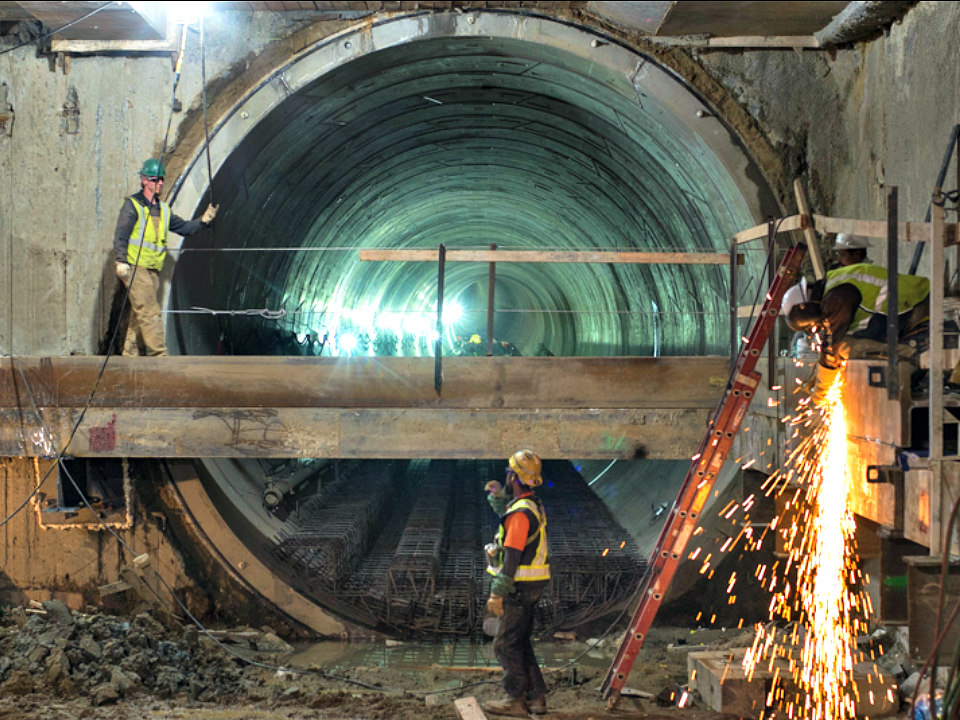
Sparks fly looking down the southbound tunnel from inside the station box, near the access portal to the headhouse. Workers are installing temporary steel bracing here before building the invert slab.
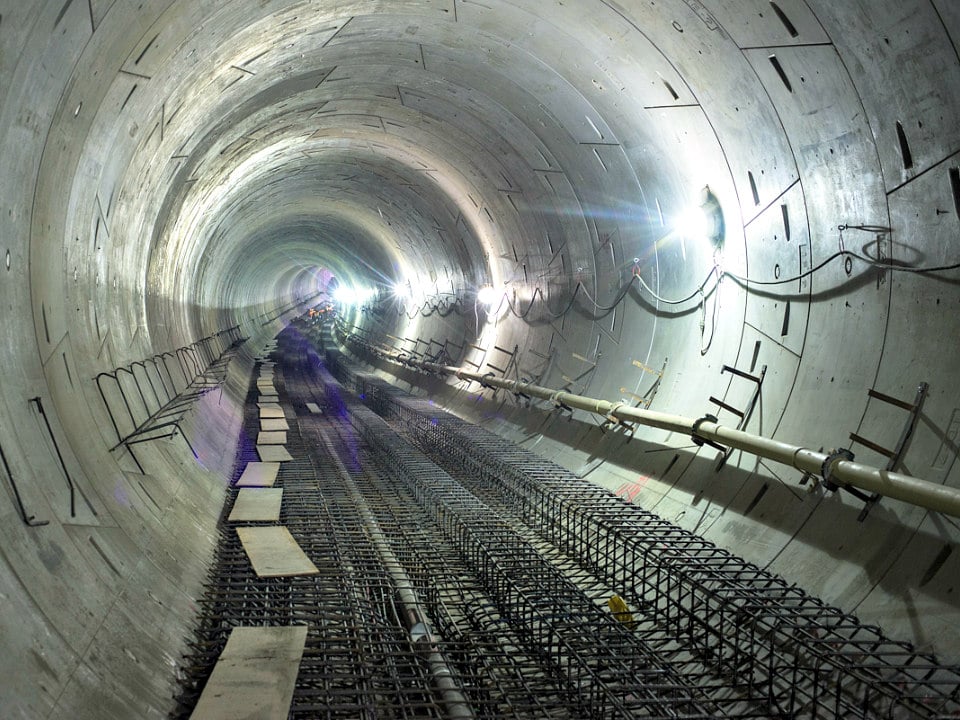
A long rebar skeleton travels up the northbound tunnel to the tunnel portal. Soon workers will pour concrete, creating the tunnel invert, which tracks will rest on.
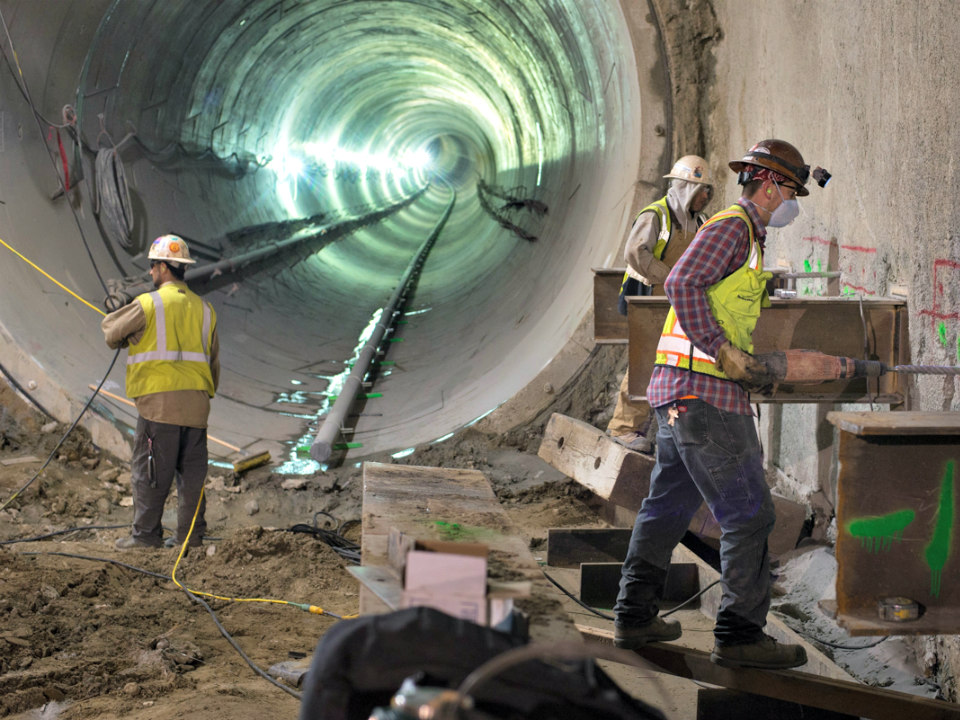
Workers drill pilot holes for rebar into the exterior slurry walls at the southwest corner of the station box.

A worker uses an angle grinder to smooth edges of a temporary steel beam on the east side of the platform level, inside the station box.
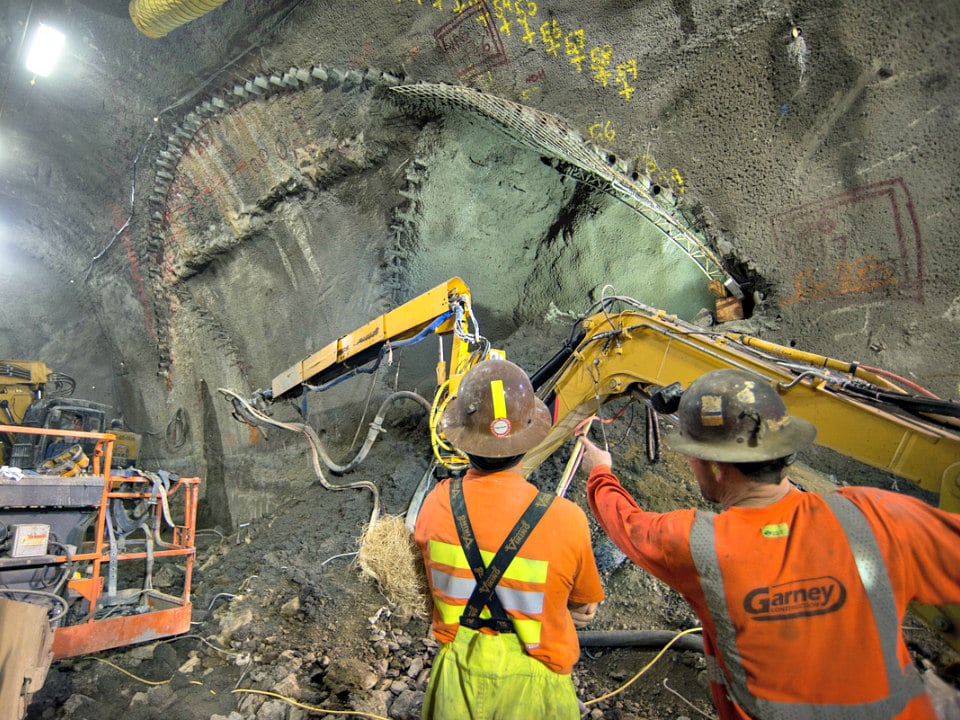
Curved lines of pipes and shotcrete walls mark the separated excavation areas that define the sequential excavation method, or SEM for short, used to excavate first the cross-cut cavern, and now the station cavern itself.
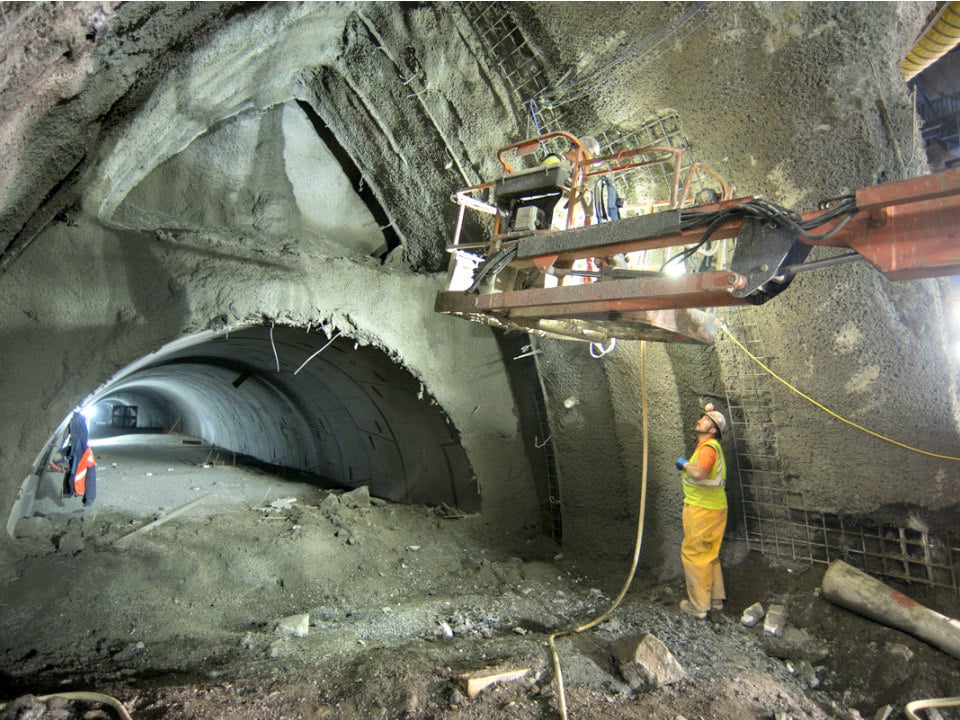
Two workers inspect steel mesh placement prior to shotcrete work inside the right side drift of the south cavern excavation.
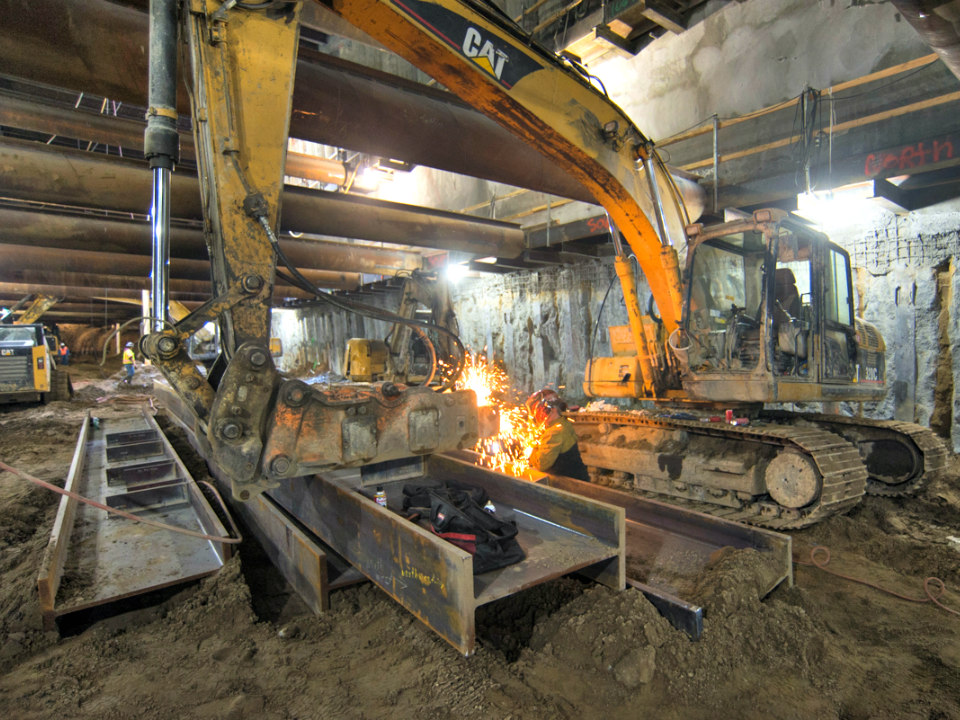
A project mechanic works on a jackhammer fitted to a large excavator inside the station box.

Workers use a bobcat to help grade the bottom of the station box, where waterproofing and an invert (floor) slab will be installed.
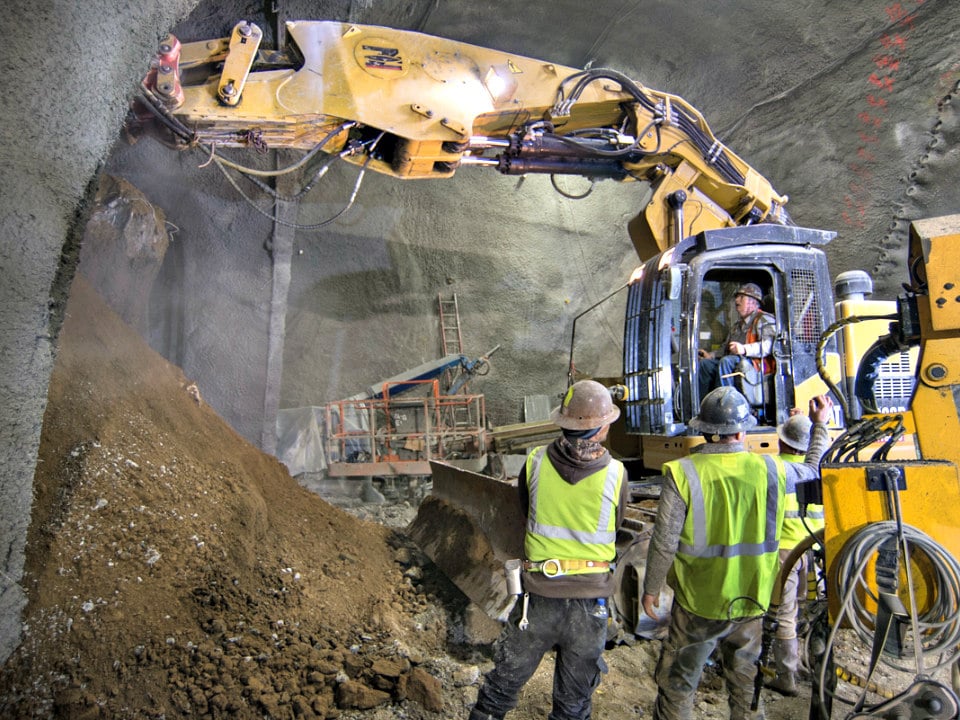
A large excavator fitted with a grinding wheel works to excavate the right side drift of the north cavern.

Looking north inside the station box, workers remove excess concrete from the outer walls, exposing steel beams which will be attached to temporary bracing to support the outer walls during excavation.
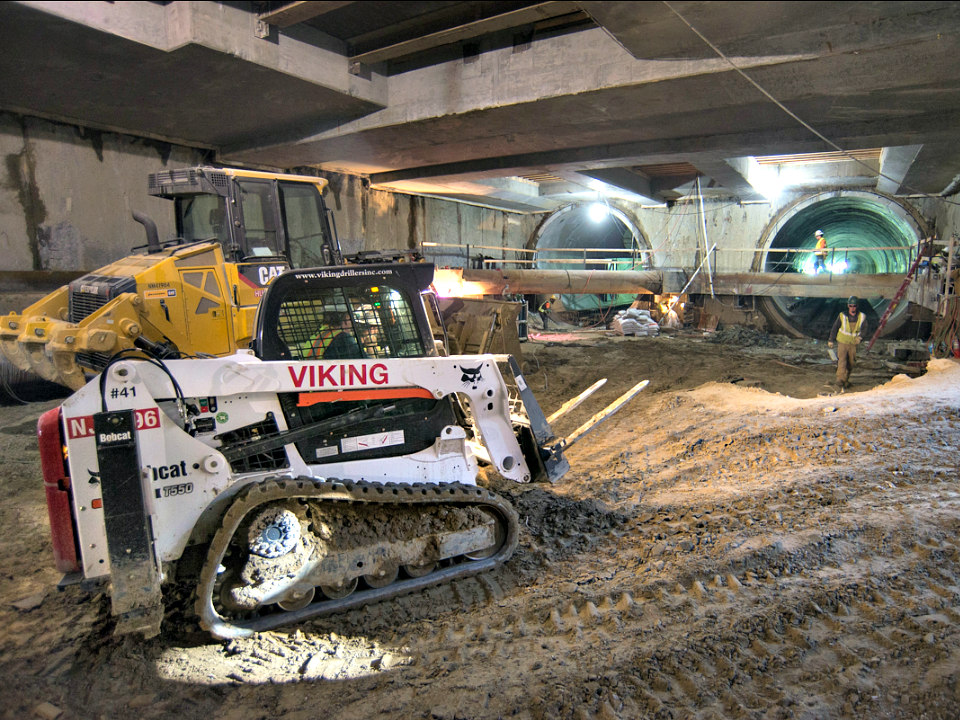
A bobcat helps move machinery and materials to and from the headhouse and the station box under 4th Street.

The point man for coordinating activity under the main access shaft signals to the surface to raise the steel bucket used to remove material from the station interior.
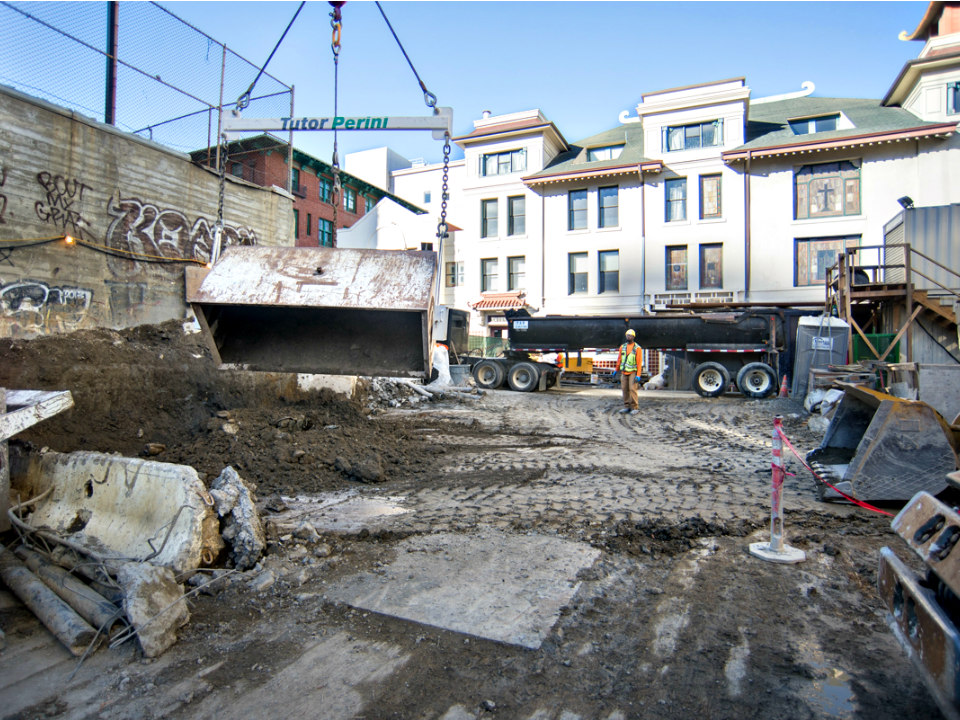
Material removed during station cavern excavation work is dumped at the surface, to be loaded on a waiting truck.




